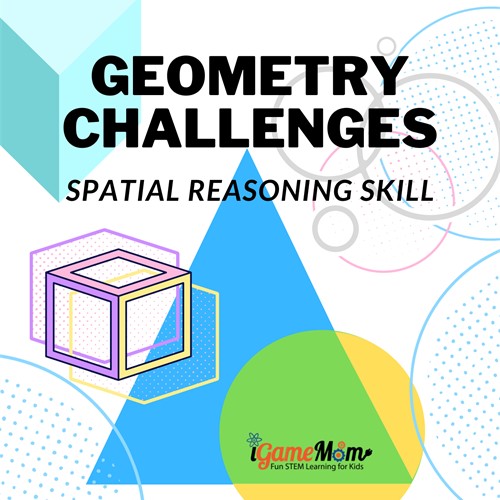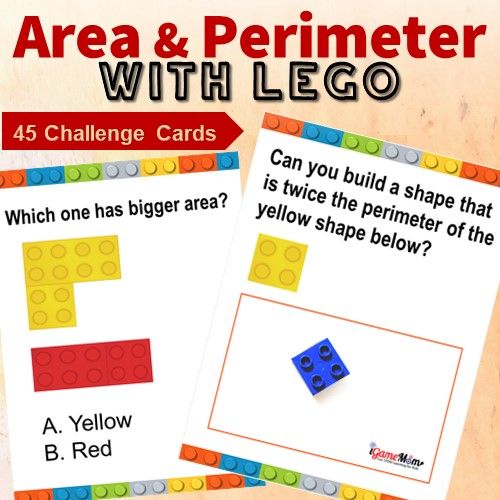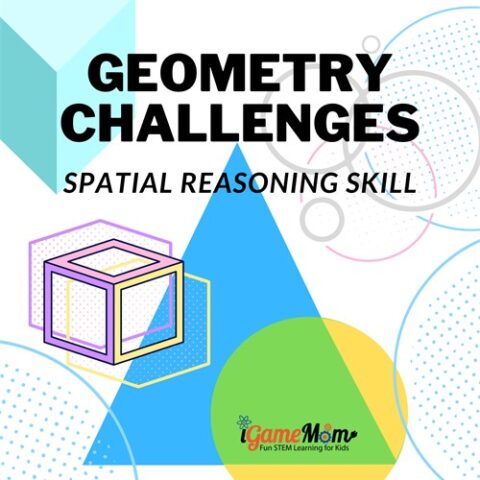Spatial reasoning skills, which are critical higher-order thinking skills, come to attention for their role in STEM career success in recent years. What are spatial reasoning skills? Why are they important for science and technology careers? Are spatial reasoning skills trainable? If yes, how can we improve our children’s spatial reasoning skills?
Spatial Reasoning Skills Introduction
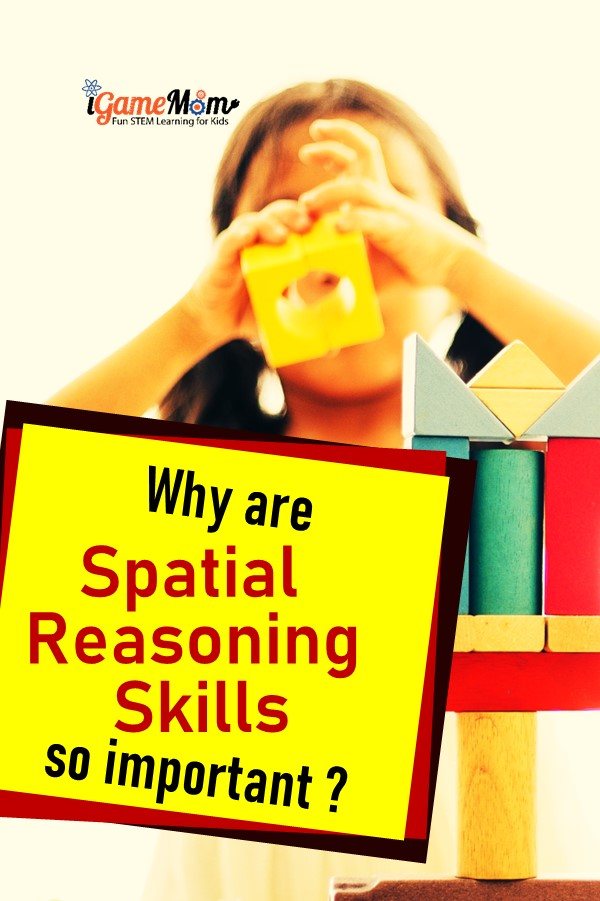
Spatial reasoning is the ability to think about and manipulate objects in three dimensions. Spatial thinking allows you to understand the location and dimension of objects, the direction and speed of movements, and how different objects and movements are related. It also allows you to visualize and manipulate objects and shapes in your head. Spatial reasoning skills are not only an essential part of art and physical education but also a crucial component of math and science learning. Studies also have shown correlations between spatial reasoning skills and math/science abilities. Many research projects have shown that spatial skills are effective predictors of success in STEM fields, or science, technology, engineering, and mathematics.
RELATED: Geometry Puzzle Game for Visual Perception Skills – Free Download
What Are Spatial Reasoning Skills
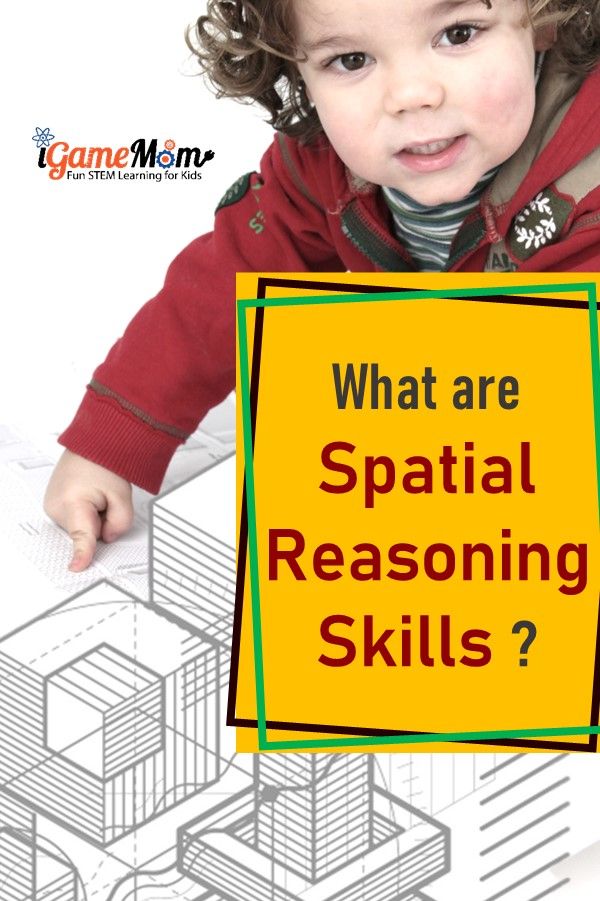
Spatial reasoning is made up of a number of different skills. A child uses these skills to engage in activities, such as navigating around team players while playing sports, or coordinating hand movements to draw or copy an object. A mathematician uses these skills to solve math and geometrical problems. A chemist uses these skills to conceptualize the interactions between different molecules. A physicist uses these skills to locate an object moving under certain forces. An engineer uses these skills to design 3D models for machines.
Spatial reasoning is not one single skill, instead, it is a set of skills requiring spatial perception and spatial visualization. While spatial perception involves understanding externally via the senses, spatial visualization is understanding internally through mental imagery in one’s mind. More specifically, spatial reasoning involves:
Mental Rotation:
Mental rotation allows us to turn images/objects in our heads. Here is a challenge question in our Geometry Challenge set to show you this type of thinking. To be able to compare the 4 images, one needs to be able to turn the images in their head first.
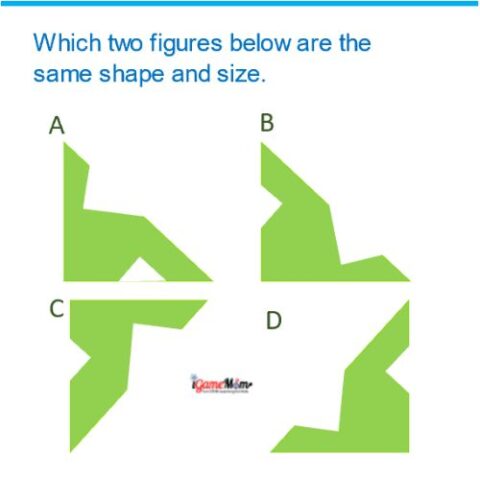
Download Geometry Challenges Improving Spatial Reasoning Skills
Geometry Challenges Improving Spatial Reasoning Skills on TpT
Disembedding
Disembedding skills are the spatial skills needed to distinguish one object or picture from a more complex background. This allows us to understand how simple structures interact to form bigger and more complicated structures. Below is an example from our Geometry Challenge set to demonstrate this skill.
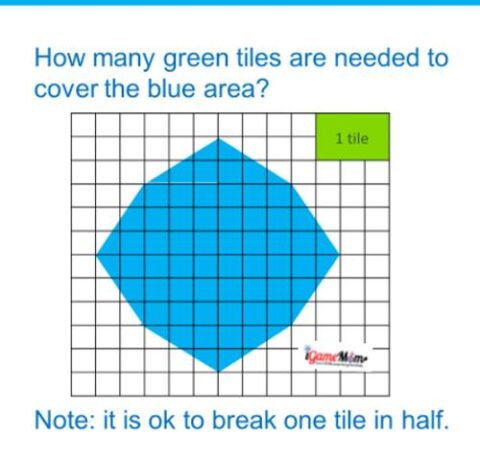
Download Geometry Challenges Improving Spatial Reasoning Skills
Geometry Challenges Improving Spatial Reasoning Skills on TpT
Spatial Scaling
Spatial scaling is the ability to transform information between representations of different sizes. With spatial scaling, you can transform distance information from one representation to another one of different sizes such as map reading. Spatial scaling skills are used frequently in everyday life as well as professional life. Engineers need to be able to translate their designs into blueprints and vice versa. Surgeons design their surgery operations based on anatomy charts or models. Here is an example from our Geometry Challenge set that helps kids with map skills. However, to truly foster the scaling ability, it is best to transition into using your own neighborhood map for practice.

Download Geometry Challenges Improving Spatial Reasoning Skills
Geometry Challenges Improving Spatial Reasoning Skills on TpT
Navigation
Navigation is the ability to remember and navigate environments. Navigation skills are vital for moving around and getting to the intended spots. To navigate properly you must be able to understand the relationships between landmarks, imagine what these landmarks will look like from different perspectives, learn routes, and remember the layout of the environment as a whole. It is worth noting that the “environment” is not limited to city streets, it can also be the jungles in the wild for a rescue worker or the inside of a heart for a surgeon. Below is an example from our Geometry Challenge set.
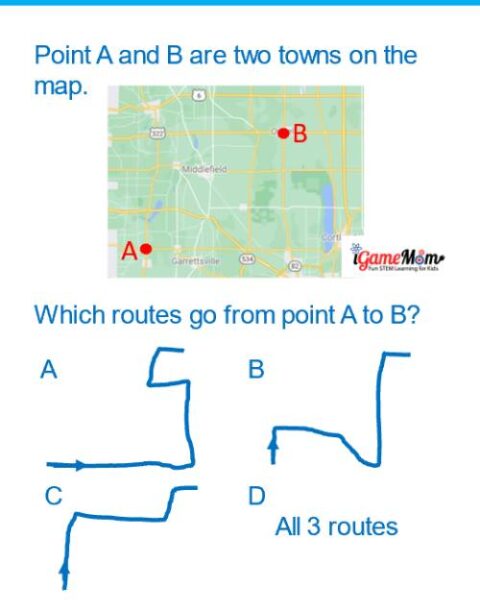
Download Geometry Challenges Improving Spatial Reasoning Skills
Geometry Challenges Improving Spatial Reasoning Skills on TpT
How to Be Better at Spatial Reasoning
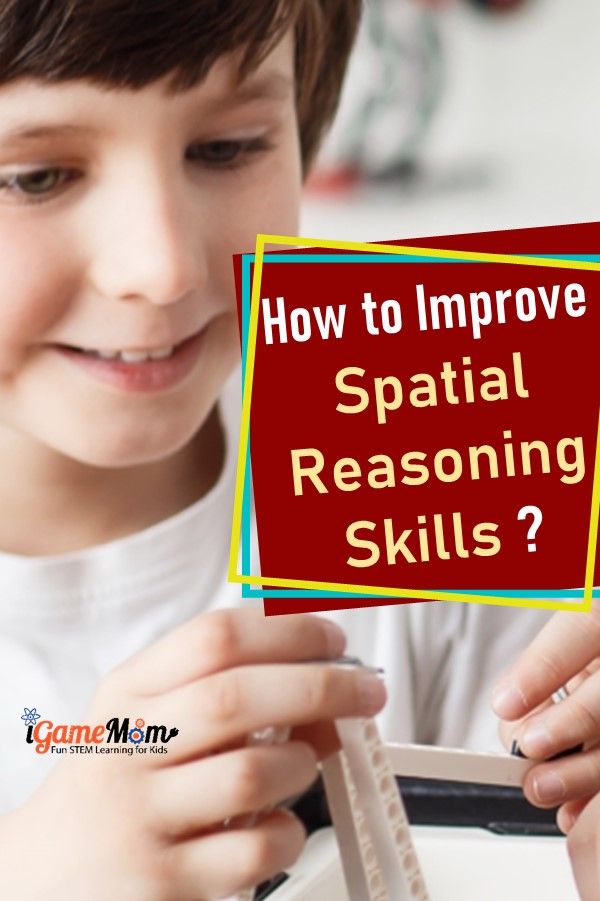
Many studies have shown that spatial reasoning skills can be developed and improved through practice. This means that practicing spatial games and doing spatial activities can improve your spatial performance. Various studies on different age groups showed similar improvements in spatial reasoning skills after training and practice, from elementary school children to college students to work-age adults.
Although traditional schooling places very little attention on spatial skill training, the good news is you can start training at any age and it takes just a little more effort on parents’ and caregivers’ part to help children to improve their spatial skills.
Some effective practices include:
Physical exploration activities, such as exploring a new place with a map;
Communicating with spatial rich vocabulary, such as below/above, middle/side, left/right, up/down;
Construction activities, such as building LEGO models;
Spatial games, such as Tangram puzzle; Perspecto or building blocks and LEGOs;
Of course, the most effective training is explicit practices designed with specific skills in mind, such as our Geometry Challenge set and Geometry Challenges with LEGO.
Spatial reasoning skills are very important for children’s development no matter what career path they would choose, but the skills are especially important for STEM fields, i.e. science technology engineering, and math. If we want our kids to be successful in their future careers, we want to start helping them improve their spatial reasoning skills now.
Download Geometry Challenges Improving Spatial Reasoning Skills
Geometry Challenges Improving Spatial Reasoning Skills on TpT
Geometry Challenges Improving Spatial Reasoning Skills
Geometry Challenges Improving Spatial Reasoning Skills is a set of 45 geometry problems challenging students on fundamental geometry concepts and critical thinking skills, with specifically designed problems to address the components of spatial reasoning skills, such as mental rotation, disembedding, spatial scaling, and navigation.
Through the practice of the problems, students will have a deeper understanding of important geometry concepts, such as the area of triangles, the definition of the parallelogram, and the differences between square and diamond. In the meantime, students will sharpen their spatial reasoning skills through the targeted exercises.
To check out the Geometry Challenge Set, click on the image below:
Looking for hands-on geometry games for spatial reasoning skills and higher-level thinking skills? Check out LEGO Geometry Challenge on Area and Perimeter.


